Um, I wrote an overclocking tutorial for a video card because of the old Huang 1070/1080 nuclear bombers.
I also hope that with the total heat ranked second finally got a 1070 small nuclear bomb just now the public test report can also be rewarded, smoothly put out to cheat a wave of gold coins
But for DIY players, the overclocking of CPU, memory, and video cards can be said to be indispensable, and it is not the same as the overclocking of the graphics card that the audience is limited to gamers. The overclocking of CPU and memory can be used by every computer user. Although the benefit after the essay was because of the time did not have time to write detailed CPU, memory overclocking, but playfully personality is a start since it must be a beautiful ending so in preparation for some time, this small series The second bullet - CPU and memory overclocking tutorial finally meet you here
As with the previous video card overclocking tutorial, in the very beginning, Proudiao still has to remind you that Xiaochao Yiqing, big super explosive machine, especially now still in the summer, we can do just as well, or collection After the reward, leave it for the winter and then start
Some basic concepts about overclocking have already been mentioned in the opening chapter of the previous post, so I will not repeat them here. However, some unique concepts about CPU and memory overclocking still need to be said. The next two parts will have a lot of text, and it may be boring to read it. If you can't read it, you can jump directly to the actual case behind it. section
The CPU frequency we know does not come out of nowhere, but is obtained by multiplying two frequencies. One of them is the FSB and the other is called the multiplier. The final CPU frequency is naturally equal to the Fx multiplier . Although this set of frequency systems has undergone many changes - such as the FSB was FSB at the beginning and now it has become BCLK - but the ever-changing need to get a higher frequency, either to increase the FSB, or Starting from increasing the multiplier, or both at the same time
However, there are still some subtle differences between the meaning of FSB and multiplier. The specific principle can be understood without knowing too much. It is only understood that “ multiplier only affects the CPU and has no effect on other parts of the system, but the FSB may affect both. To other components (such as memory hard disk graphics card, etc.)
Remember when you first started playing MMX166, FSB and multiplier can be adjusted directly through the switch on the motherboard. For example, the default 166 clock frequency is the multiplier of 66 FSB times 2.5, if the frequency is adjusted to 3 , then got a MMX200. At the time, there were still some motherboards that could tune the FSB to 75 or even 83 - such as the hot Asus TX97 - to get a 225 (75x3) or even 250 (83x3) Pentium MMX. However, at the time, there was still no relatively complete frequency division mechanism between the CPU FSB and the internal PCI/IDE bus frequency. The increase in the CPU FSB will also increase the frequency of the system bus, which will increase the frequency of the system bus. Hard disk is also equivalent to overclocking, of course, there will be improved performance, but at the same time the test of stability is also greater
After entering the Ben 2 / Celeron era, the frequency division between the FSB and the system bus frequency has been relatively perfect, and adjusting the CPU FSB will not have any effect on the system bus frequency, so the CPU overclocking basic during that period of time It is mainly to adjust the FSB, the most classic example is the Celestial 300A overclocking of the people, is to increase the FSB of 66 to 100, so as to get the frequency of 450. Including the 775 pork after the era, but also basically are based on the ultra-FSB, such as the popular Pentium E2140 and pork E6300/E6400, and then after the map is brought up with 771 Zhiqiang games are also the FSB Pull from 333 to 400 or even higher to get the performance of the comparable generation i5
However, starting from the 2nd generation of i7, the Super FSB game was lost to intel by ban overnight. Since then, I would like to play the K series processor and the Z series main board, and then watch the 100 FSB. A little bit of frequency adjustment, of course, to the Tyrant K/X processor and X-Series motherboard can still play ultra-FSB
So to summarize, for the 1st generation i7 and the previous CPU, the overclocking is generally to increase the FSB to achieve; and for the 2nd generation i7 and later CPU, the overclocking is generally to increase the frequency multiplier to achieve
OK, after the basic concept is understood, we can talk about the voltage problem, which is related to the stability and security after overclocking, it is very important
Everyone should know that if you want to let the CPU work at the frequency after the overclock, it is almost necessary to increase the voltage , because the higher the voltage, the more stable the CPU will work. So generally speaking, when we overclock, we will first set the voltage to a relatively safe maximum value, and then gradually adjust the frequency and voltage according to the stability after the system is overclocked until a more perfect balance is finally achieved . Each generation of CPU's voltage tolerance is actually different. For example, the latest skylake is generally considered to eat more voltage, 1.4v-1.5v or even 1.6v may not have much problem, and the previous generation may 1.4v More dangerous. My approach is to first set the CPU voltage to 1.35v-1.4v and then start to adjust the frequency, this value is a 99% safe voltage, of course, the premise is that the heat to be done, the full load temperature is best not to exceed 95 degrees
The second question is which voltages need to be adjusted. Everyone knows that the voltage most directly related to the CPU is the core voltage, which is generally called Vcore. This is also the voltage mentioned in the previous paragraph. But in addition, there are two voltages that are related to CPU overclocking. One is called VCCSA and the other is called VCCIO.
What is the use of these two voltages can also be said to be divergent, specifically refer to the overclock.net post in a statement
In short, VCCSA and VCCIO, one of which is the system bus voltage, has an effect on the overclocking of the BCLK; the other is the previous VTT/QPI voltage, which has an impact on the overclocking of the memory , but in the end it doesn't seem to have any one. Clear conclusions. Generally more mainstream argument is VCCIO pipe memory, VCCSA pipe BCLK, so when the general memory frequency does not go, it is recommended to add a little VCCIO voltage, when the FSB is not up, it is recommended to add a little VCCSA voltage , we can also pay attention Your own motherboard, in the default state of memory and memory open XMP overclocking, these two voltages will certainly change
In general VCCIO should not be added too high, 1.1-1.15v enough to deal with general overclocking, if you want to put the memory to a very high frequency, such as DDR3 2400 or more than DDR4 3200, it is recommended to add about 1.2-1.25v , And then high is a little dangerous; and VCCSA even if not overclocked, increase in VCCIO should also simultaneously increase some value, but it should not exceed 1.2v, of course, non-k processor BCLK overclocking skylake platform, then Can consider increasing VCCSA to 1.25v or even 1.3v
In addition to Vcore, VCCIO, and VCCSA, the three most directly related to the overclocking voltage, sometimes the VCCIN voltage, which is the total CPU input voltage, will also affect the stability after overclocking . According to the online statement, This voltage is ideally maintained at Vcore+0.4v, but adding 2v or even 2.1v after a significant overclock is acceptable.
So now we can summarize the CPU overclocking part. In short, it is to start with the four voltages Vcore, VCCIO, VCCSA and VCCIN - if they can be adjusted in the motherboard bios - set to 1.35v, 1.2. v, 1.2v, and 1.9v, then try the highest possible frequency for this voltage combination. If it is easy to achieve an achievement of 4.5g on the basic disk, then lower these four voltages one by one until you finally get a 4.5g. The minimum voltage of the frequency combination; if you unfortunately touch a big thunder CPU, this voltage can not reach 4.5g, then you can have two options, one is to continue to pressurize the Vcore until stable 4.5g, but In this case, the full load temperature after the overclocking is likely to be under pressure; the other is how much it can exceed, and the so-called 4.5g is 4.1g.
Finally, there is a small point to point out that, starting from the haswell (4770k/4790k) generation, the frequency of the internal and secondary caches in the CPU is separated from the CPU clock frequency, so this generation includes the current skylake CPU The overclocking has introduced the concept of a double super - that is, CPU clock frequency and buffer frequency (also known as RING frequency) at the same time overclocking , in theory, of course, the two frequency synchronization is better, such as double over 4.5g - CPU main Both frequency and buffer frequency are as high as 4.5g. However, the double overshoot will bring a problem, that is, the voltage will be higher than the single over, and the newly added Vring voltage must also be adjusted synchronously.
For example, suppose that a single-handed frequency pull to 4.5g requires only 1.2v of Vcore voltage. Vring doesn't need to control auto. But if you want to double 4.5g, you need to add Vcore from 1.2v to 1.25v. To add Vring to 1.25v or even 1.3v like this, at this time, the performance improvement due to the increase of the ring frequency is probably not worthwhile for the greatly increased temperature at the same time, so my opinion on Double Super is that The best, the actual voltage temperature can not control or a single super calculation
Memory overclocking is not as much of a mess as the CPU has to consider - if you only consider frequency and voltage
Of course, most people's actions are simpler and more crude - directly into the bios to open the XMP overclocking like a key
And before the memory overclocking, most people's point of view is whether or not overclocking only has an impact on running points, the actual application, then as long as the total memory reaches a value - such as 16g - the frequency of high and low basically have no effect
This old point of view should say that after entering the era of DDR4, many tests have proved to be completely wrong, especially if you are a game player - and I believe that the current domestic computer users, especially those who are willing to toss overclocking users Most of them are gamers. High-frequency DDR4 has been proven to give the same configuration with 10 frames or more in the same game.
A well-known test video is believed to have been seen by many people, including testing of Grand Theft Auto 5, The Witcher 3, Assassin's Creed Unity, Far Cry 4, Crysis 3, Call of Duty: Advanced Warfare, Battlefield 4, Middle-earth : Shadow of Mordor so several representative games, and the conclusion is enough to explain the importance of high frequency for DDR4 , although DDR3 platform does not seem to have similar test video, but the conclusion should be similar, if DDR3 2400 and DDR3 1333 Like the game frame rate, that developer is really optimized
Paste this video easily, you can watch it on your own, the original youtube link here, please bring your own ladder, the following is a video of the youku I found to intercept one of the screenshots of the Wizard 3 test near the end to illustrate, In the default case of the i5 6500 frequency, the average frame difference between the DDR4 2133 and the DDR4 3066/3200 is 85 to 100, and the gap between the instantaneous frames even reaches 73 to 100 in this screenshot. What level of this is it? To know that the performance gap between the default frequency of the 1070 and 1080 graphics cards is only about 25% to 30%, and only one memory frequency can bring about a similar percentage of performance gaps. What do you think? You are spending more than 2K of software to upgrade your graphics card, or spend some time and effort to overclock your little DDR4 memory, let alone after the i5 6500 overclocking, the difference in memory frequency will be even greater. The difference between the average number of frames between DDR4 2632 and DDR4 3196 is 97 to 110.
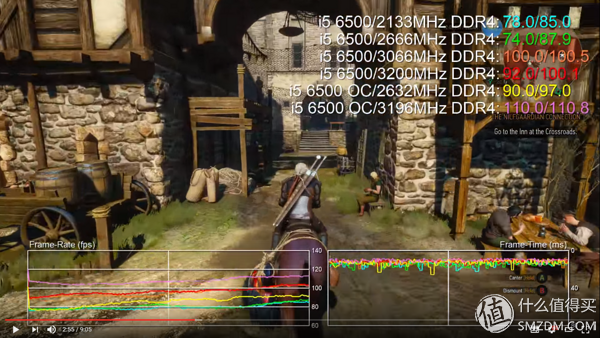
Ok, if you're already overclocking your memory now, we can start to talk about some basic concepts that need to be understood.
First of all, of course, and CPU and video card overclocking must talk about the frequency and voltage, for memory, the two are not very complicated, the higher the frequency is better, the voltage is lower the better, of course, want to get higher The proper frequency of pressure is still necessary
What really complicates frequency and voltage is the memory gap generation . Although I don't know how many years memory is used by you, I think that the original SDRAM and the first-generation DDR platforms are still missing (though I have also retained a set of platforms to prepare for the future and devoted to playing old games.) So now the more viable memory platform is DDR2 (which is also completely eliminated), DDR3 and the latest DDR4, and these three generations of memory are each The frequency and voltage range are not the same, specifically
DDR2 mainstream default frequency in DDR2-800, overclocked to 1066 or 1200 even if the very good results; and the default voltage is generally 1.8v-1.9v like this, then overclocking if raised to 2v-2.2v are basically acceptable
DDR3 mainstream default frequency in DDR3-1600, overclocked to 2133 or 2400 even if the very good results, of course, there are super Gods up to 2800 or even 3000; the default voltage, the standard DDR3 memory is 1.5v, low-voltage DDR3L memory is 1.35v, it is acceptable to upgrade to 1.65v or even 1.75v for overclocking
The current mainstream default frequency of DDR4 is still DDR4-2400. Of course, the price of 3,000 or so frequency slivers is not particularly expensive. If you do not want to toss, you can do it in one step. In terms of overclocking, the DDR4-2133 or DDR4-2400 strips of mainstream brands currently available in the market can all exceed the basic price of 3,000. The good ones can even reach 3200 or even higher, and the limit frequency is currently around 4133. The default voltage of DDR4 is 1.2v, generally it will increase to 1.35v by XMP one-key overclocking. If you want to exceed the higher limit, it can be regarded as safe if it is added to 1.5v or even 2v when extreme overclocking.
So everyone can see that with the advancement of memory technology, the default frequency has been increasing and the default voltage has been declining, so the new installed students still recommend buying the DDR4 platform directly in one step. And DDR4 has a good place is that there are many products with high XMP frequency, 3000,3200 this is already a basic disk, and the price is more friendly, no pressure on the purchase; 3600,3733 this high frequency is not uncommon, the price Although it is not high enough to be completely unaffordable, Chichi has even introduced products such as 4000, 4133 which are currently limited in frequency. So even if you do not overclock, as long as you are enough, you can directly buy the top memory. In contrast, on the DDR3 side, although the 2400 frequency products are all over the place, but it is still not possible to directly buy 3000 products with this extreme frequency, and as the manufacturers focus on the further shift to DDR4, this platform is almost immediately on the way to DDR2. After the dust. So DDR4 is the best choice for both general users who don’t want to toss or die if they don’t toss and die.
After understanding the various memory frequency and voltage ranges, we also need to understand the unique parameters of memory overclocking - timing . Timing this thing how to say, probably similar to the running degree of the auto parts, the memory with the same frequency - say two DDR4-2400 memory - like the same type of car, can go up to 120 high speed No problem, but the condition of running 120 will be different depending on the degree of running-in, timing adjustment is good, may accidentally be able to run out of 125, and the timing adjustment is not good, may be exhausted and can only run to 115, the performance is particularly good to touch 120. Therefore, there are often tests showing that the memory of two adjacent frequencies, such as DDR4-3000 and DDR4-3200, may perform better than the high-frequency, but the memory with a large difference in frequency - For example, between DDR4-3000 and DDR4-3866, the difference in performance is mainly determined by the frequency
The time sequence that is generally known to the public is similar to this. For example, in the parameter interface of JD’s memory products, the “timing 15-16-16-35†is marked.
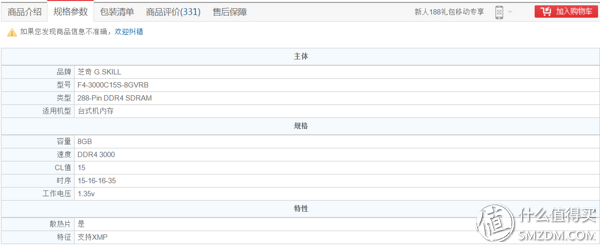
These four numbers plus CR (instruction ratio) actually constitute the first timing of the memory

For the current DDR4 memory, tRCD and tRP are actually the same, so the middle two numbers like "Time Series 15-16-16-35" must be the same, and the adjustable items in the BIOS are also reduced to 4 One

In addition to these five first time series items in the traditional sense, the memory page in the CPUZ will also include tRFC. For the average user, when the memory is overclocked, in addition to increasing the frequency, try to optimize the six. The project is enough
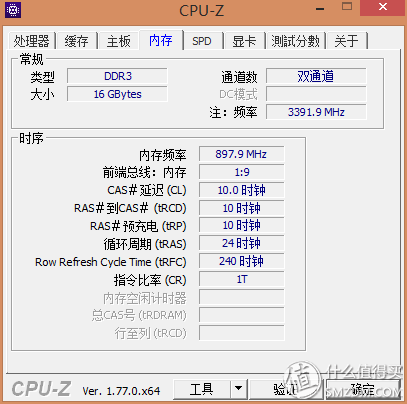
However, if you love tossing and death as much as I do, there are many items waiting for the second timing, third timing, and fourth timing. It's good to eat the melons and look at the following diagrams, and then cherish life without touching them. It's good to eat melon quietly, and I really want to go back to the days of eating melons.
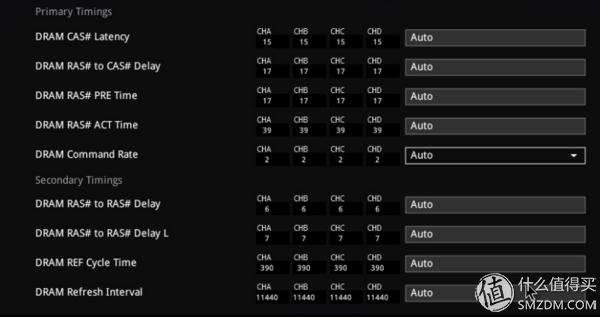
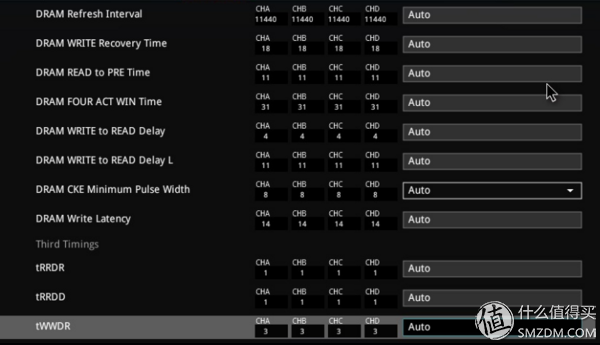
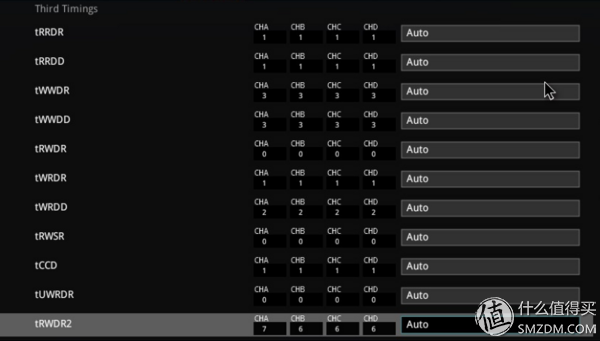
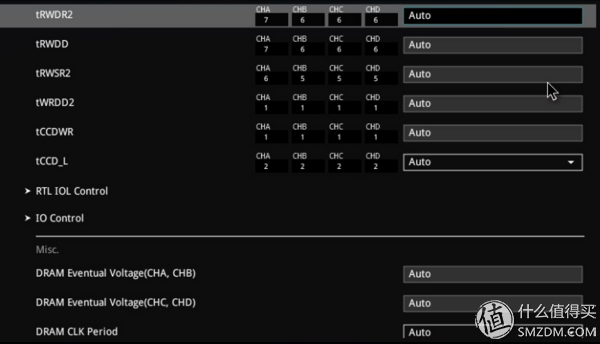
And even more frightening is that the general bios configuration items will have a short description of why this option is done. Only the memory ginseng here, a short description is to copy the abbreviation of the ginseng and copy it again. so once again reminded, not to step into the first Out-of-sequence memory timing tiankeng
Of course, people like me who love to die certainly still have, and I can only share with you at this time, and I hope that you don’t fall out like me and cannot climb it out. For non-professional memory players like us, they want to die. For the atypical melons, climbing to the shoulders of the Great God is very necessary. Fortunately, I found such a god when I was at the bottom of the pit. The large memory from the pceva altar is R—royalk. Also released a study material on the timing, it is best to learn before entering the pit
In addition, as the first generation of intel's official support for DDR4 desktop platform, skylake is still continuing to deepen, and also posted an R translation of learning materials for your reference.
As with the previous video card overclocking tutorial, after the introduction of the basic principles still need to introduce specific overclocking tools, but different from the video card overclocking, CPU and memory overclocking is the most commonly used and not the software overclocking, but still Is a traditional bios overclocking
Why is there such a difference? Personally, I think the reason for history is more. Because at the beginning, you want to set the voltage/frequency to complete the overclocking, not even through the bios, but directly through the hardware jumpers/switches on the motherboard, and then you can start the voltage/frequency directly in the BIOS. Setting, so in a sense, bios overclocking is already in the category of software overclocking with respect to this kind of hardware jumper/switch overclocking.
And bios as the bottom of the entire computer is the most basic system, many times have to use him to do some settings - the most commonly used, such as loading the system to set the order of the boot disk - can be said to be a very high utilization The system, and the entry method is very simple, press the del button on the line. Such a system, which can directly set the CPU/memory-related parameters, has no reason why everyone does not use them. After the overclocking era began, all motherboard manufacturers have introduced a number of bios features for overclocking security, such as overclocking protection-related functions. As a result, everyone is accustomed to directly adjusting the CPU memory-related parameters in the bios, and after adjustment, once and for all, The need for software overclocking tools is naturally less pressing
The bios of the video card is not directly accessible to the bios of the motherboard. The vendor has not developed some overclocking features for the bios. Therefore, the software only uses the special tools to modify the bios to achieve the goal of hard overclocking after determining the overclocking frequency.
Ok, so much nonsense, or come back and continue to introduce overclocking tools. In addition to traditional bios overclocking, various software overclocking tools have become more and more popular in recent years. The biggest advantage of software overclocking is, of course, ease of use, and it can be adjusted on the fly without changing every parameter. Restart once. And in some special occasions - such as notebook overclocking - has an irreplaceable role
The more commonly used tools are the Intel XTUs, which can easily be used for overclocking K/X processors. For non-K/X processors, they can also be super-nuclear. Gadgets

Then is the overclocking software that each mainboard manufacturer puts out for use on its own motherboards. For example, ASRock I've always liked has its own overclocking software. However, I have to say that ASRock's software is a bit messy, between different series of motherboards. It is not universal, the software for top models is called F-Stream Tuning Utility, the general model is called ASRock A-Tuning Utility, and there are some models - for example, I bought Fatal1ty Z170 Gaming-ITX/ac - although The software name is F-Stream but the version number is A-Tuning, and it is not surprising that ASRock is not incompatible with each other.
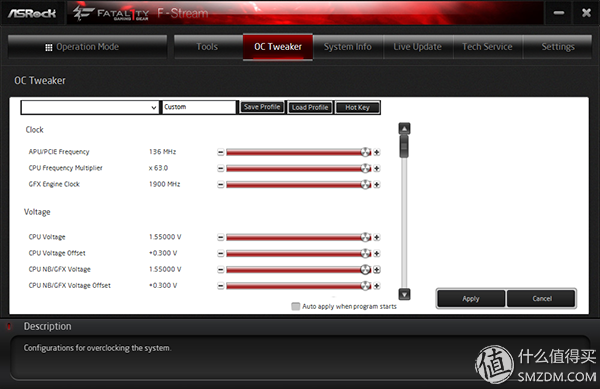
The other three motherboards - ASUS Gigabyte, MSI, of course, have their own overclocking software, features are similar, no longer say more here
The above software is mainly dominated by CPU overclocking and regulating voltage, memory overclocking and its own special software, there are two more commonly used, one is TimingConfigurator from ASRock, see this many adjustment items is not crazy Although this software is theoretically ASRock motherboard dedicated, but it seems that as long as the same chipset can be universal, but everyone download to pay attention to their motherboard chipset corresponding ASRock motherboard interface, Z77/Z87/Z97/Z170 Respectively find the corresponding ASRock Z77/Z87/Z97/Z170 motherboard
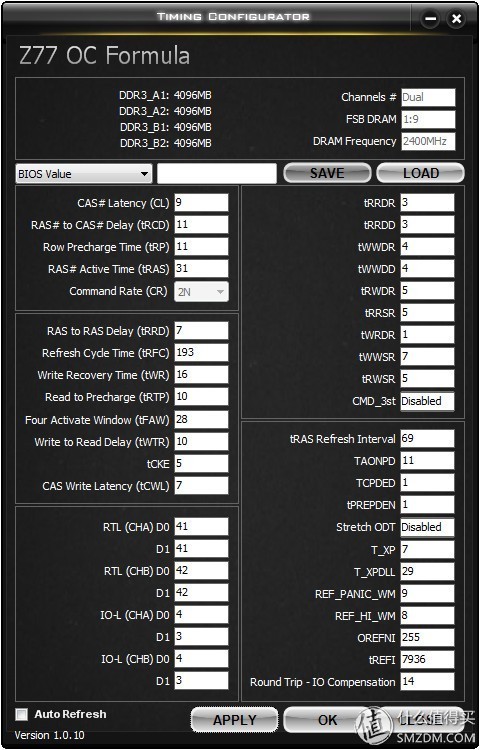
Another one is from Asus's MemTweakIt. The adjustable parameters do not seem to be more than ASRock's software, but it is very convenient to run the memory within the software. Real-time understanding of whether the parameter adjustment has any effect
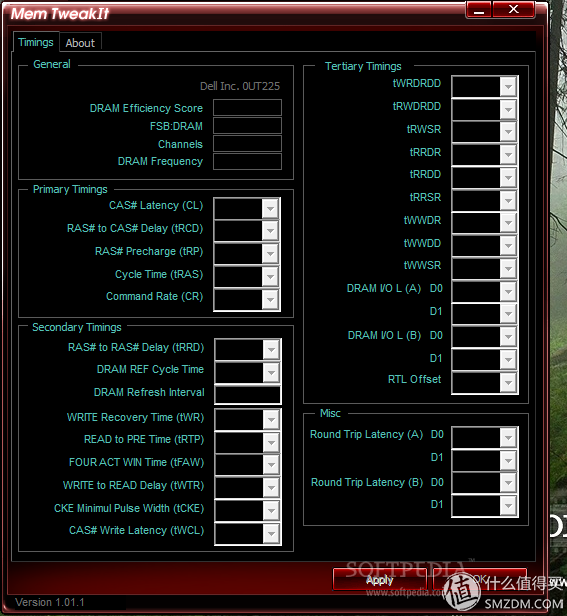
In addition to these two software, memory overclocking and a gameplay is similar to video card overclocking bios, which is to adjust the appropriate parameters after the brush SPD. The SPD is the device that stores the frequency sequence information inside the memory and can be understood as the memory bios. If you want to play in this way, use the Thaiphoon burner as a tool. Interested valuers can understand
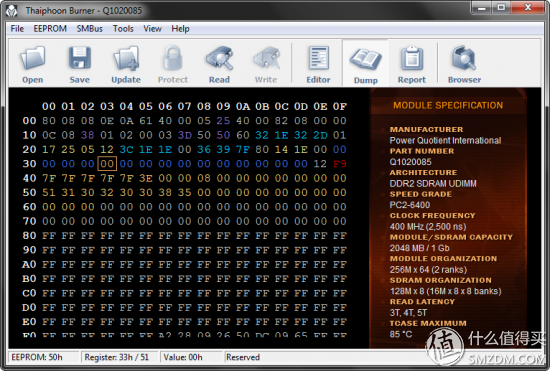
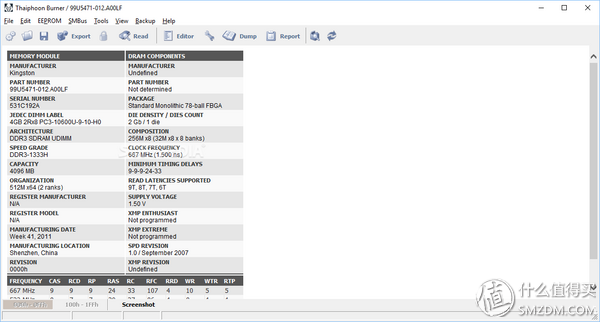
However, I do not particularly recommend this method. There is a certain risk. Secondly, the latest chipset has artificially blocked the function of flashing the memory SPD, and after the motherboard bios has been adjusted to achieve a hard super-effect, there is no Necessary to pursue the same effect through the brush SPD . If you really want to try, you can first refer to the two posts on the Thaiphoon burner website to crack the function of the SPD brushed by the chipset.
8 Series/9 Series Chipset See Here
100-series chipset look here
The first paragraph introduced the current mainstream overclocking software, but as I said, the most commonly used CPU/memory overclocking method is through the most traditional BIOS, so in this section we come to take a good look at the mystery of many people's eyes. What is the unpredictable BIOS and how to overclock the CPU/memory through the BIOS
As defined on Wikipedia
In simple terms, however, the BIOS is the lowest-level, directly accessible system of a computer, and it can set some very basic system parameters. We took the BIOS of the MSI Z97 PC Mate motherboard that appeared in a previous post as an example to explain
Everyone knows about the BIOS may still remain in the original impression, a large number of English options make it impossible to start
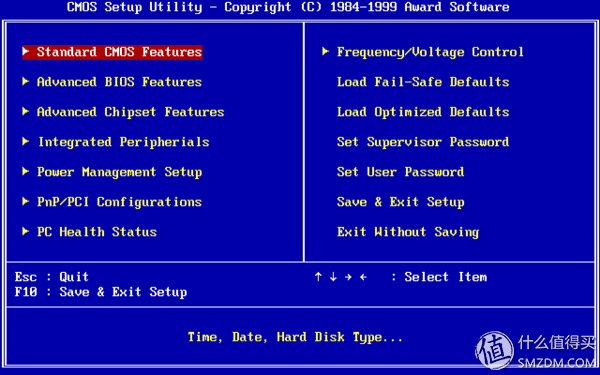
However, since the BIOS was gradually graphically started a few years ago, it should be said that after the graphical BIOS has not much of the original mysterious color, but more like an application

The upper function area can adjust the language of the BIOS interface, although I don't recommend the Chinese interface provided by most manufacturers. The translation quality of the Chinese interface is rather worrying. It is only a little bit more powerful than the machine, and the key options The comments will not be translated at all. Secondly, if you use the English interface, you can easily find the relevant discussion posts with keywords. After all, the ghosts play overclocked gods more.
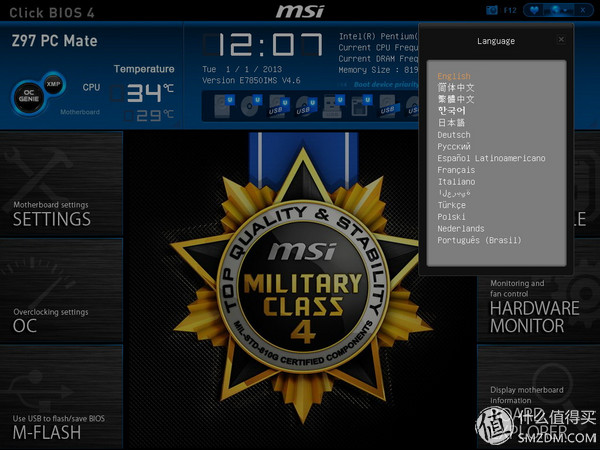
In addition, you can also set the most commonly used interface to your favorites. The startup item below the system information can also be easily dragged to adjust.
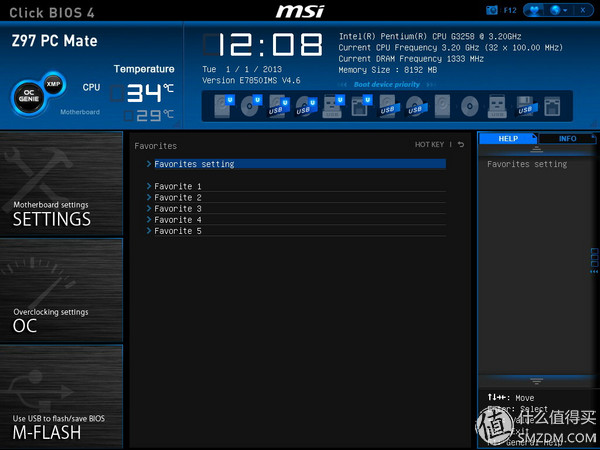
The two shortcut buttons in the upper right corner can directly open a key overclock or memory XMP
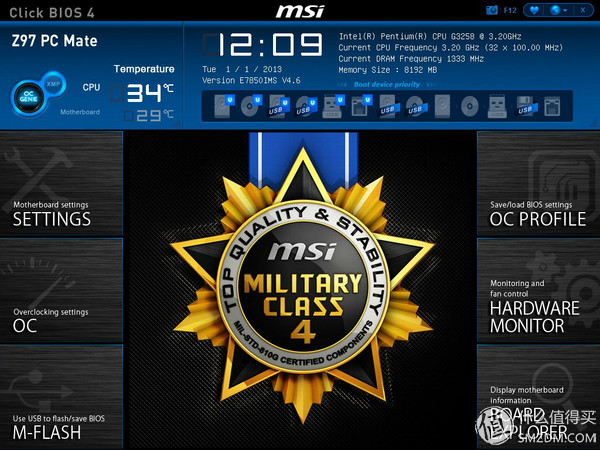
There are 6 main functions in the main setting area below, which are general settings
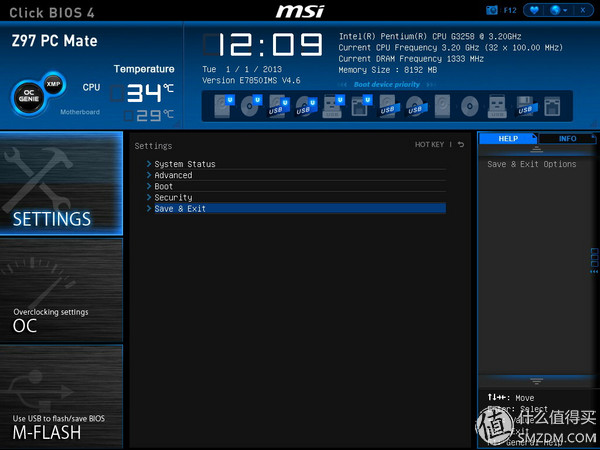
Overclocking settings
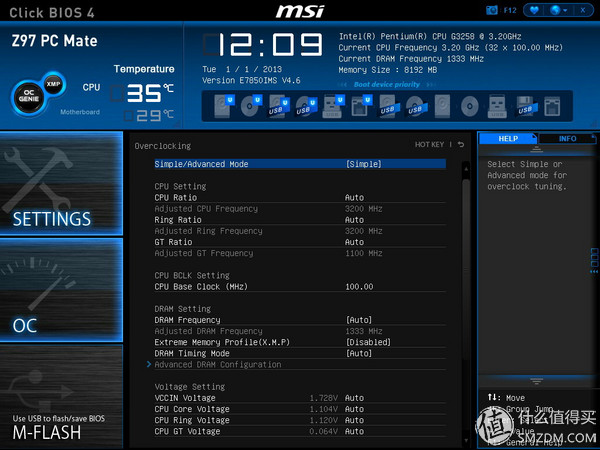
U disk update BIOS
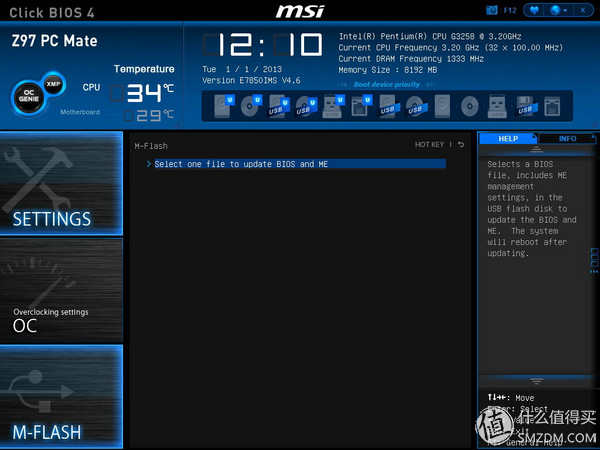
Directly select the U disk update file on the ok
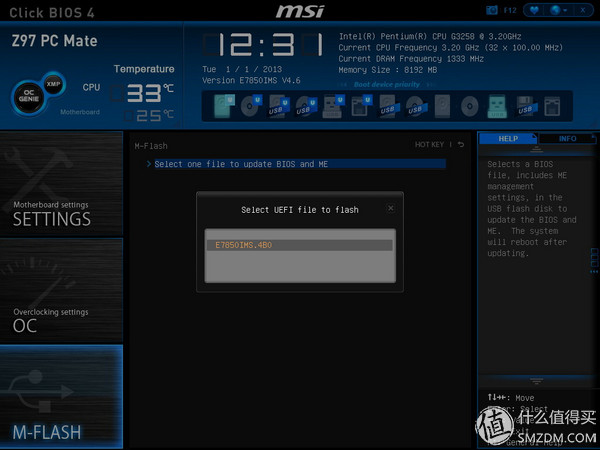
Store overclocking presets for storing/reading different frequency schemes
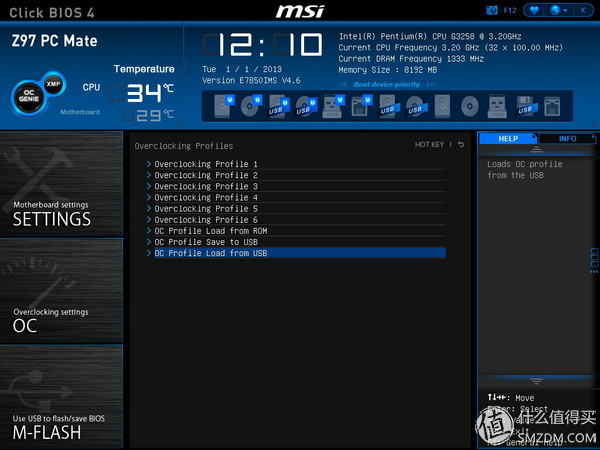
Hardware status monitoring, you can also set the fan speed program
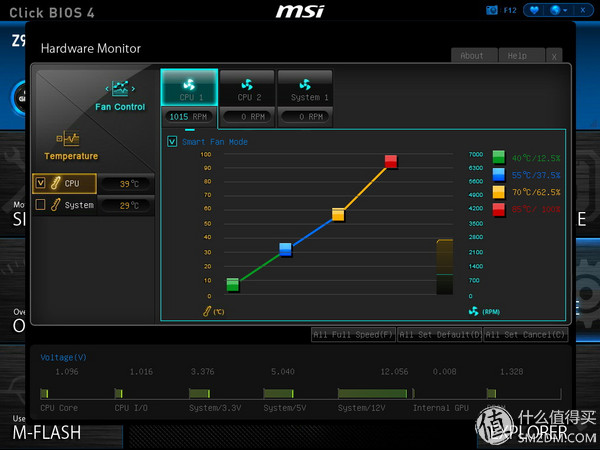
Motherboard browser for viewing the usage of each slot
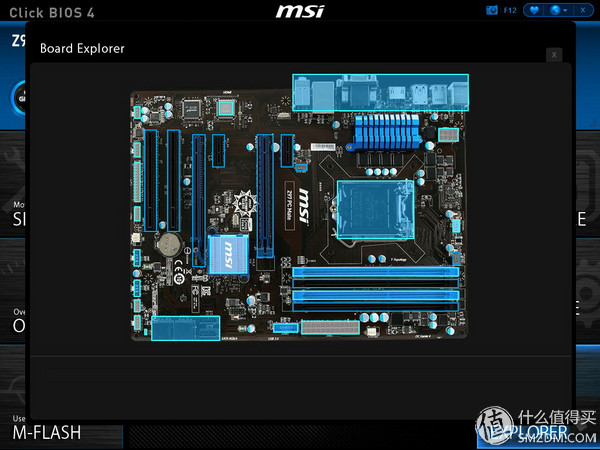
General settings there are some sub-menus, respectively, the system status, advanced settings, startup sequence and security settings, basically the whole default on ok, and overclocking is not much
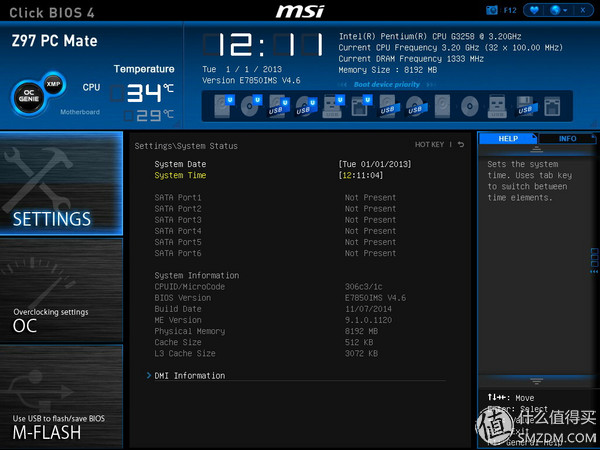
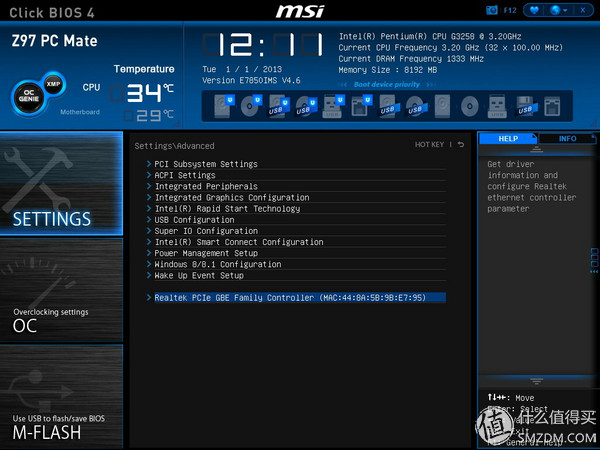
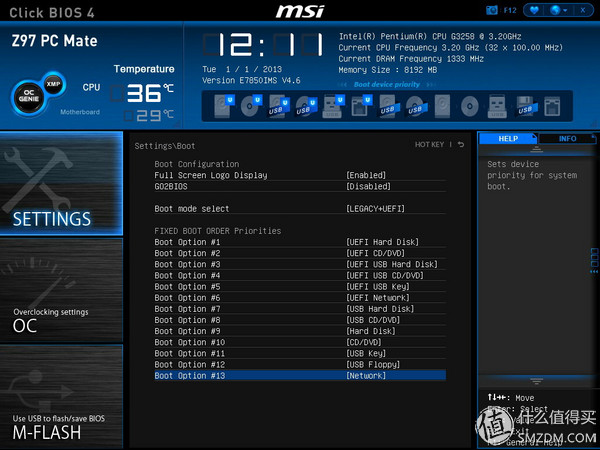
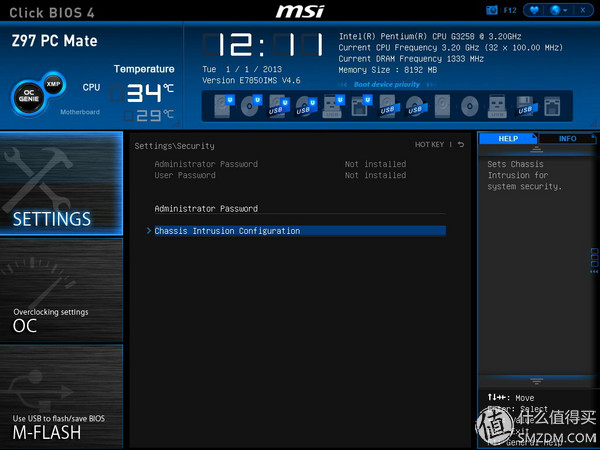
Then comes the highlight. Let's take a closer look at the overclocking options in the BIOS. MSI's BIOS default overclocking interface is Simple, but the number of items that can be set is already very high:
The top item is a switch that adjusts the simple/advanced mode
The following three options are where the CPU, RING cache, and core frequency are set. It should be noted that the frequency of the CPU and RING is obtained by multiplying the number filled here by 100, and the frequency of the display is multiplied by the number filled in here. Get it with 50
Again is the adjustment of the FSB FSB, but the Z97 chipset has almost no ability of FSB.
After the next option is a memory-related, you can directly set the frequency and XMP switch, and advanced dram configuration you can enter the memory timing adjustment parameter interface
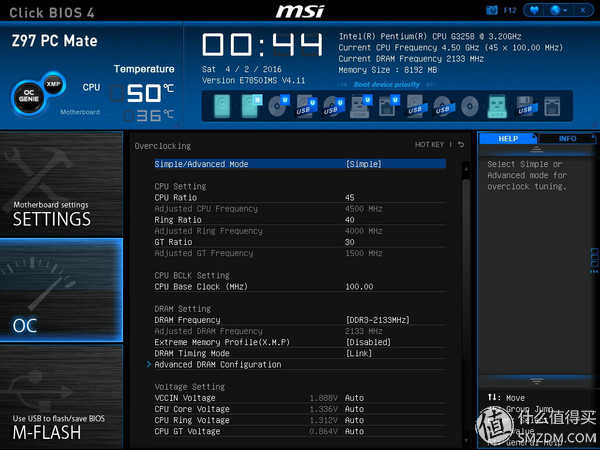
Ok, next we pull this page to the end, you can see there is a more complete voltage adjustment options
Although the names are not the same, we can still see the adjustment of VCCIN, Vcore, Vring, core voltage, VCCSA, VCCIO, and memory voltage from top to bottom, and the following CPU features submenu can switch the CPU's energy saving. Options, overclocking is best to shut down better

If you think these settings are not enough, it doesn't matter. There are advanced overclocking menus waiting for you. Settings are more than simple ones.
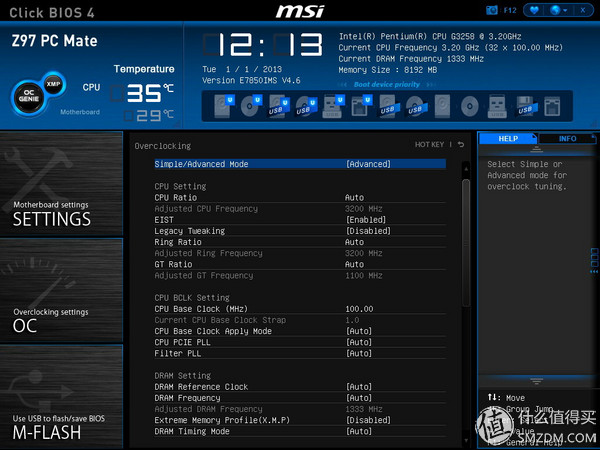
As the chipset is different, the configurable items will also become different. For example, the following figure is the BIOS interface of another MSI motherboard I found on the Internet. In addition to the option name, settings will be different. How much can be different, such as this motherboard can even set two sets of memory voltage, AB channel and CD channel
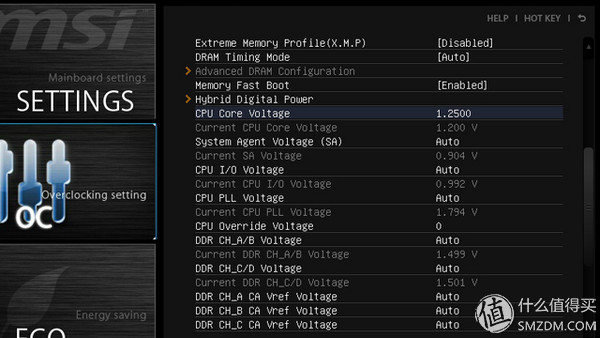
Although there are many options, in fact, there are only frequency and voltage-related options related to overclocking, and it is still very simple when you are familiar with it. And as I said before, the whole process of overclocking is to raise the voltage first and then slowly explore the highest frequency, then fine-tune it, and there is no too complicated technical content. So we still immediately enter the actual combat stage to see the method and effect of overclocking through actual testing.
This combination should be regarded as a starting point for me to start tossing desktop overclocking during this time, and I have to say that 3258 is the heart of my 20th Anniversary and the Pentium just hits my heart. When I release, I think I must play one piece. Helpless MSI Z97 board is not to force, only up to 4.5g. Magnesium yellow vest not much to say, 1600 frequency low pressure bar, strong overclocking ability, 2133 is the basic disk, the probability of 2400
Because there was a long period of window time before, it took me a lot of time to become familiar with the new concept of overclocking. What interests me most is the newly emerged dual-super features, although it is not necessary to over-pursue the CPU on the Internet. With the same frequency as RING, I decided to do my own experiment
First I tested the cache and memory performance at /RING@4g
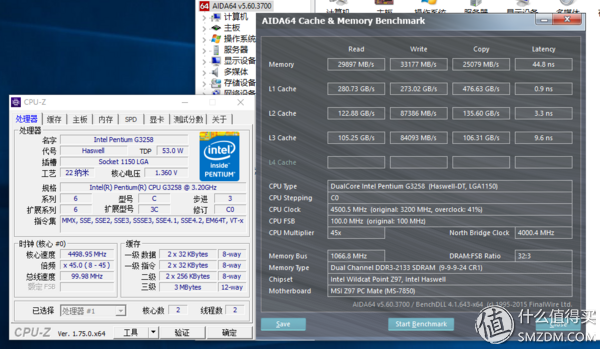
Then I tested the CPU/cache and memory performance
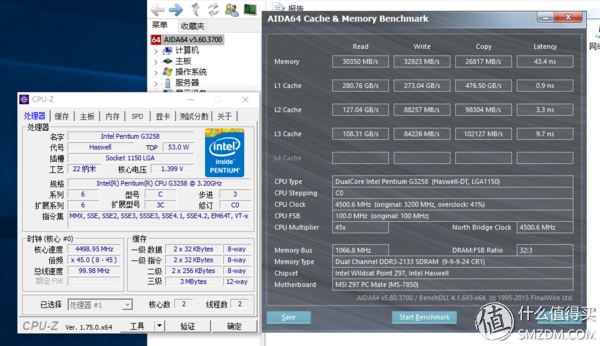
From the standpoint of performance, it can only be said that the double 4.5g does have a certain improvement compared to 4.5g/4g, but it should be noted that the voltage through which the test passed is also a difference of 0.4v. For this subtle achievement improvement, I Would prefer a lower 0.4v voltage for a better look at safer temperatures
Then I used firestrike's cpu test to test the effect of overclocking and RING frequency on performance.
The first is the result of the full default 3.2g, cpu score 3335
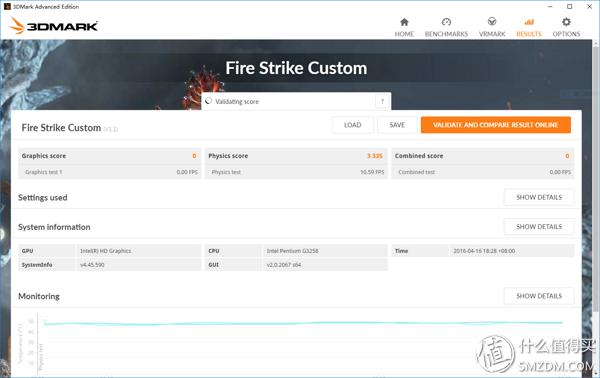
Then is the frequency 4.5g, ring default 3.2g, cpu score 4609
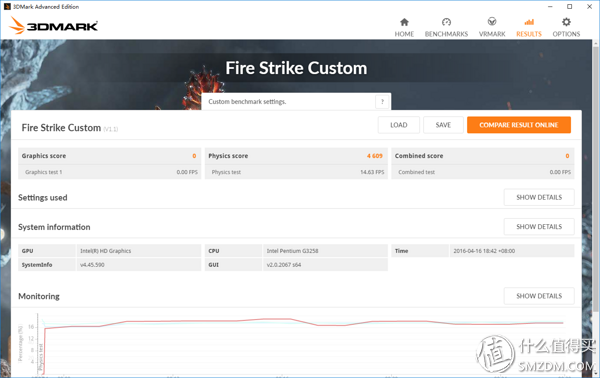
Frequency 4.5g,ring3.6g,cpu score 4639

Frequency 4.5g,ring4g,cpu score 4667
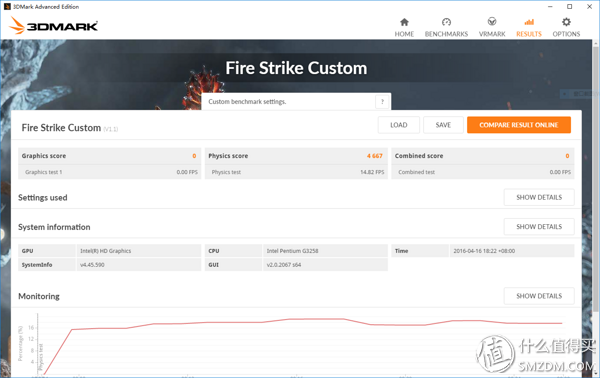
Frequency 4.5g, ring4.5g, cpu score 4692
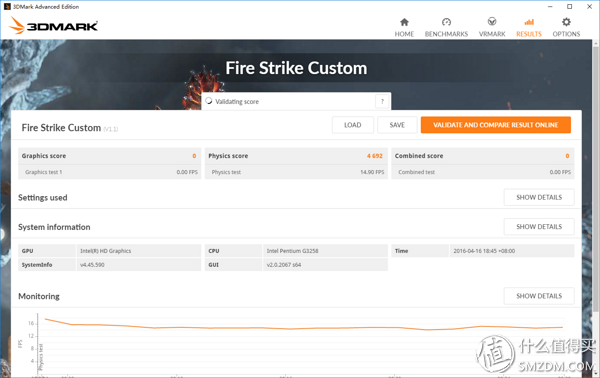
It can be seen that the cpu clock speed is the most direct and most violent improvement of performance, and the improvement of performance brought about by the ring frequency increase is too small to be considered as experimental error, so here we can draw a conclusion: If the double-supply leads to high voltage for stable operation and far exceeds the stable operating voltage required by the single super, then it will still give up the double-goal, and the resulting performance increase (at least for the game) will not be able to return to voltage/ Increase in temperature
It should be said that overclocking 3258 is still very fun, especially over the years did not play overclocking in the desktop platform, I passed this toss is just a glow of the second spring, also familiar with some of the new concepts of overclocking now, especially the various voltage The difference between the role and the above, as well as the effect of the above-mentioned specifically tested double. And I found that with the increasing CPU integration, many factors will affect the ultimate CPU overclocking results, such as the integrated memory controller IMC , directly determines the voltage required for the CPU to work stably when the memory is operating at a certain frequency. But also can determine the same memory with different CPU can reach the upper frequency limit. For the magnesium yellow vest, almost every one can work at 2133c9 at a stable voltage of 1.5v, but I found that this 3258 can't work stably when it is forced to pull this frequency, and it will randomly blue screen even if the CPU voltage is added. To 1.4v/memory voltage added to 1.65v is still the same, after dropping to 2000 frequency everything is normal, and the CPU voltage can also be down
However, this machine is not equipped with its own, and not so much time slowly fine-tuning, so the final reached 4.5g/4g CPU/RING frequency and 2000c9 memory frequency after the delivery, be regarded as a certain regret Fortunately, right away, I discovered a more fun skylake non-K overclocking.
The non-K overclocking of the Z170 is actually my tossing over the past six months. It's not that I haven't considered direct graduation on the 6700k, but I know it's hard to resist the attractiveness of this highly DIY gameplay.
Previously issued an original rough introduction to the results of overclocking
But here I will explain in more detail overclocking methods and new results tossed during this time
First of all, let's take a look at how to get this intel hidden benefit of non-K processor overclocking. Take the high-profile ASRock motherboard as an example. Even for the non-K overclocking function, there is a name called sky oc. The opening method is very simple. Press the X key when the following screen appears
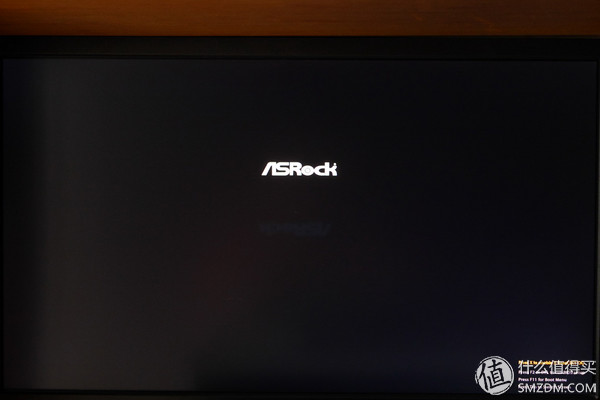
We don't turn it on, but instead go to bios to see the default voltages and frequencies. In the initial simple interface, we can see that the default CPU frequency is 3.3g and the memory works on 2133.
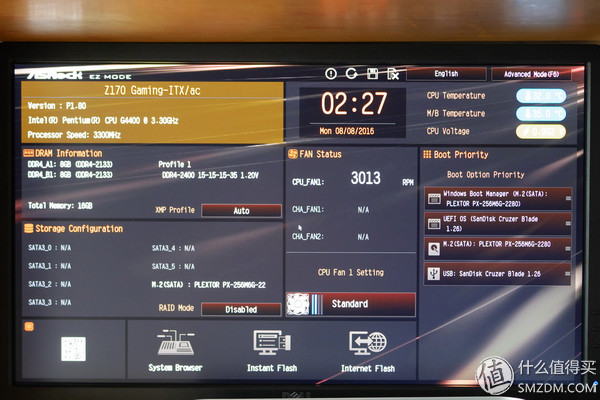
After entering the advanced interface, many more options are back

With the default voltage, VCCIO and VCCSA are only 0.95v and 1.05v, respectively, and VCC PLL is 1.2v.

After the sky oc is turned on, the startup logo will also change. The letter oc in the middle of ASrock will be lit. This detail is very good.

At this point to enter the bios interface can be found BCLK FSB has been from the default 100 overclocked 10% to 110, cpu frequency has also been raised to 3.63g. The memory frequency changes to a weird 2052 because of the change of BCLK, and the guess is that the maximum value is less than 2133.
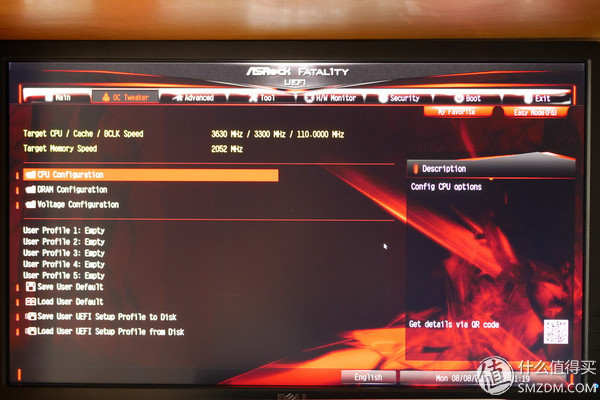
The voltage has also changed, the voltage of pch has been increased from 1v to 1.1v, VCCIO has been increased from 0.95v to 1.1v, VCCSA has been increased from 1.05v to 1.2v, and VCC PLL has been improved from 1.2v to 1.3v . It is the official setting of ASRock's non-K overclocking safe voltage range, which is of good reference value
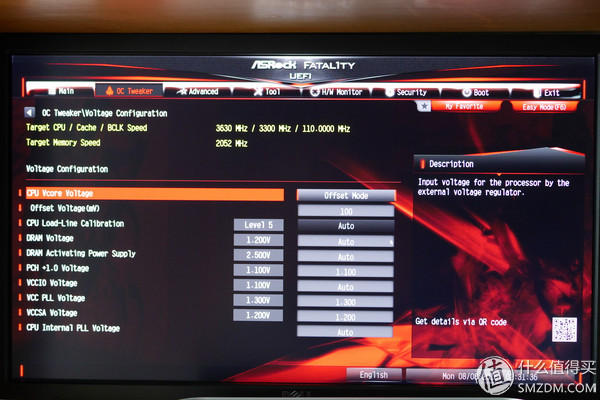
Everyone can try to overclock when the CPU voltage can be adjusted to 1.4v as shown in the figure below, anti-voltage level to open to level 2, and then slowly start to increase the frequency and voltage adjustment
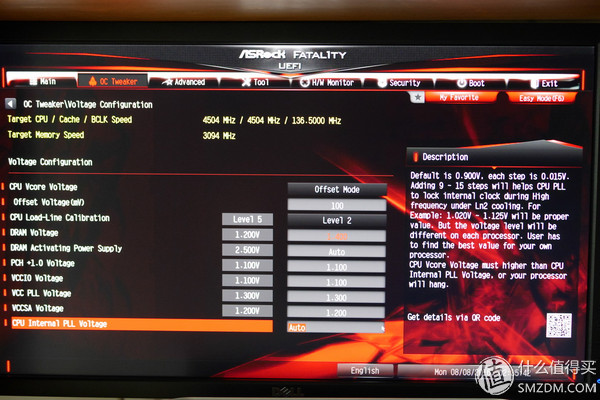
From the above figure, you can see skylake non-K overclocking is a very interesting place, that is because the non-K processor default can not be overclocked, naturally can not adjust the RING frequency, so once overclocked by ultra-FSB, the cache frequency will be synchronized Ascension means that as long as the overclocking is double, the physical requirements of the CPU are even higher . However, the performance increase after double-passing to 4.5g is also very obvious, first put a memory/cache performance graph, with the memory performance up to 3100 at the same time is still considerable, and the voltage has also dropped to 1.248v
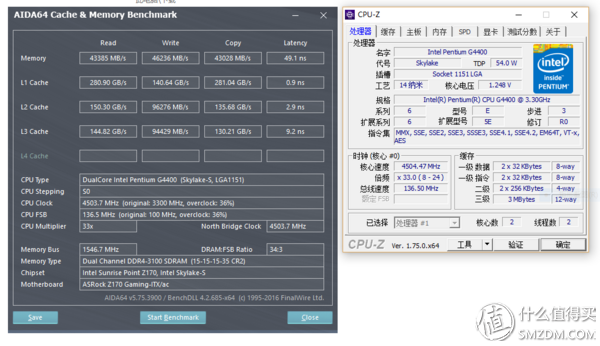
The CPUZ built-in simple running points show that Pentium up to 4.5g has higher scores than 4g 6700k single-core run
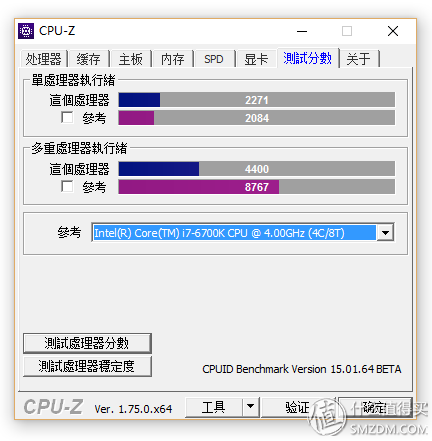
After releasing several sets of comparison results before and after overclocking, it should directly reflect the non-K overclocking performance of a G4400 from 3.3g to 4.5g.
Aida64's cpu queen increased from 15281 to 20980
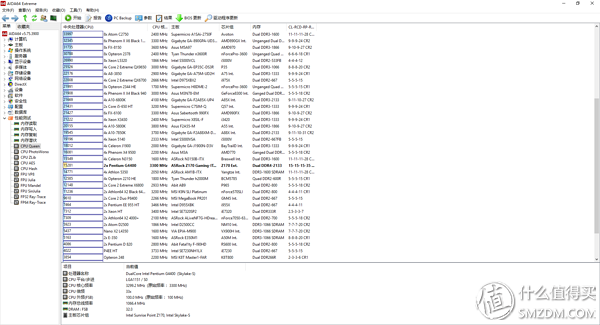
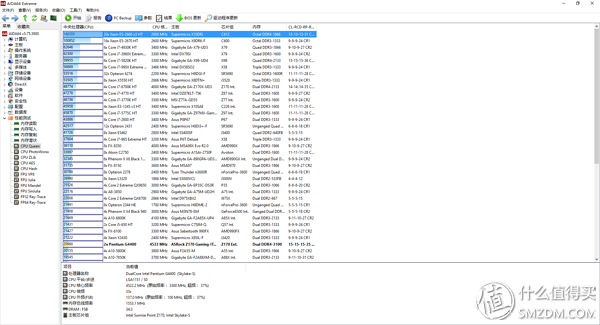
Chess increased from 5085 to 7017
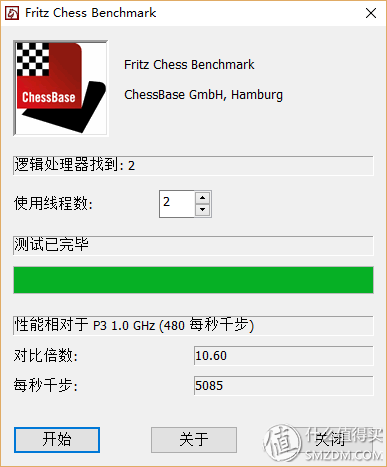
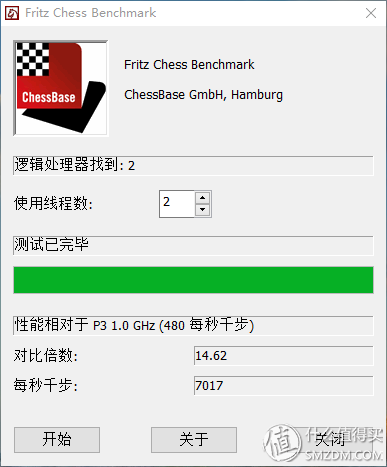
CPUZ runs up from 1672/3289 to 2293/4427
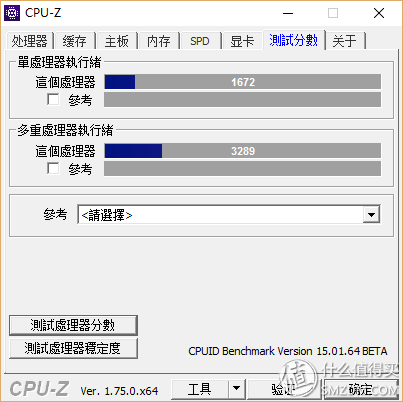
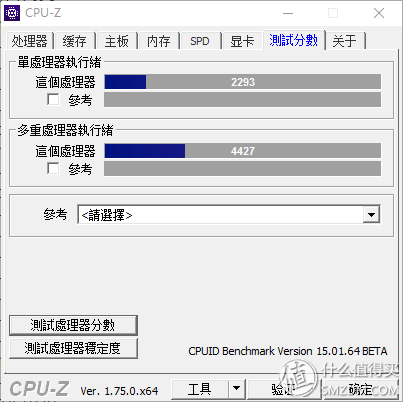
As with video card overclocking, CPU/memory overclocking also requires stress testing to verify the stability of the entire system. Unlike the common P95/Linx/aida64/æ’¸ humidity tests, I have developed a new method. That is, at the same time open N memtest run at the same time, both to test the stability of the memory, but also allows the CPU to run at full speed to test the stability of the CPU . However, this method seems to work only for i5 and below processors, because I found that using this method on a 4-core 8-threaded processor only allows the CPU to reach a load of around 90%.
This piece of G4400 was finished with more than 200% memtest at a frequency of 4.7g with a maximum voltage of 1.392v, and the temperature was controlled at 72 degrees due to the change of the liquid cap, which is still acceptable for everyday use. temperature
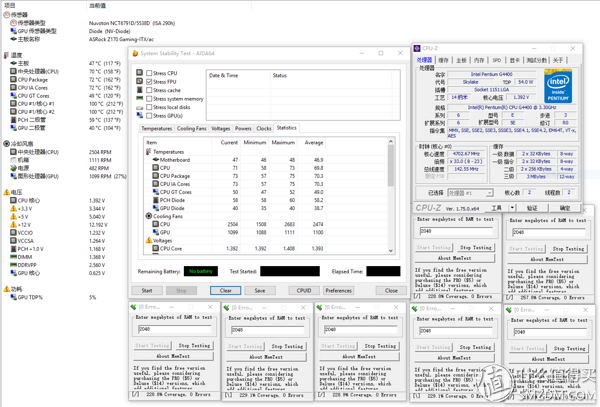
而1.248v下跑4.5gçš„è¯æ¸©åº¦å°±èƒ½å¥½çœ‹å¾ˆå¤šï¼Œè·‘完100%多一点的memtestæ‰62度,足足低了10度。而且截图å¯ä»¥çœ‹å‡ºCPU的缓å˜é¢‘çŽ‡ç¡®å®žå’Œä¸»é¢‘ä¸€æ ·åŒæ¥è¶…到了4.5g
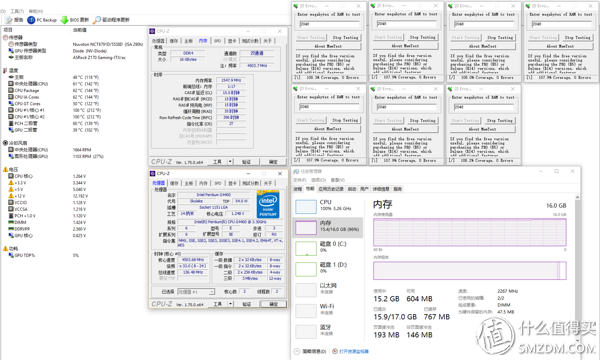
和之å‰3258超频时我主è¦è€ƒå¯Ÿäº†åŒè¶…å’Œå•è¶…çš„åŒºåˆ«ä¸€æ ·ï¼Œè¿™æ¬¡4400的超频我也考察了一个问题,那就是内å˜é¢‘率对超频稳定性和性能的影å“ï¼Œé¦–å…ˆè¿˜æ˜¯ä¸Šä¸¤å¼ å¤å¢“9è·‘åˆ†æˆªå›¾ï¼Œç¬¬ä¸€å¼ æ˜¯CPU主频4.5内å˜è·‘在2100å·¦å³çš„å¸§æ•°ï¼Œç¬¬äºŒå¼ åˆ™æ˜¯CPU4.5g内å˜3100的帧数,å¯ä»¥å¾ˆæ˜Žæ˜¾çš„看到最低帧足足从84æ高到了98,最高帧虽然æå‡å¹…度ä¸å¤§ï¼Œä¹Ÿä»Ž170æ高到了176,虽然平å‡å¸§æ•°å› 为å¤å¢“9对CPU性能并ä¸æ•æ„Ÿçš„关系åªä»Ž133.2æ高到了135.6,但是最低帧æ高的幅度ç»å¯¹å¯ä»¥å¸¦æ¥æ›´æµç•…的游æˆä½“验,也验è¯äº†å‰æ–‡ä¸å¯¹äºŽé«˜é¢‘DDR4的结论
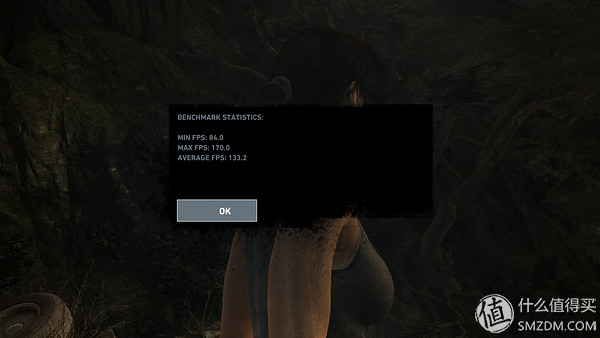

ä¸è¿‡å†…å˜é¢‘率的æ高虽然对于性能有æžå¤§çš„æå‡ï¼Œå´ä¹Ÿå¯¹æ•´ä¸ªç³»ç»Ÿçš„稳定性æ出了更高的è¦æ±‚,比如我试过把CPUä¿æŒåœ¨é»˜é¢‘,åŒæ ·çš„内å˜æ˜¯å¯ä»¥è¶…到3200并通过memtest的,而如果把CPU超至4.5之åŽï¼ŒåŒå‚数下能3200过memtest的内å˜å°±ç›´æŽ¥ä¸èƒ½å¼€æœºäº†ï¼Œå¿…须得é™åˆ°3100æ‰èƒ½é€šè¿‡æµ‹è¯•ã€‚而且我也试过CPU4.5g时,内å˜è·‘在2100å’Œ3100时能稳定通过memtest时的CPU电压是ä¸åŒçš„,3100的内å˜éœ€è¦1.248çš„CPU电压æ‰èƒ½ç¨³å®šè·‘完测试,而2100的内å˜åªéœ€è¦1.212çš„CPU电压就能稳定跑完测试。 所以现在的å°å¼æœºè¶…频与其说是å•ç‹¬è¶…CPU或者å•ç‹¬è¶…内å˜ï¼Œä¸å¦‚说是综åˆè€ƒéªŒCPU体质ã€CPU内建内å˜æŽ§åˆ¶å™¨ä½“è´¨ã€CPU缓å˜ä½“质和内å˜æ¡ä½“质这四者的混åˆä½“,而且这四者共åŒå†³å®šäº†CPU和内å˜åœ¨ä¸€èµ·èƒ½ä»¥å¤šé«˜çš„频率组åˆç¨³å®šè¿è¡Œ
å°å¼æœºè¶…频玩家虽然也少,但肯定没有笔记本超频玩家那么少,而笔记本超频玩家里玩CPU/内å˜è¶…频的åˆæ˜¯å°‘ä¸ŠåŠ å°‘ï¼Œä¸»è¦åŽŸå› è¿˜æ˜¯å› ä¸ºç¼ºå°‘bios和软件的支æŒï¼Œå®žåœ¨æƒ³è¶…频的è¯ä¹Ÿåªæœ‰å¾ˆå°‘æ•°å‡ ä¸ªé‡‡ç”¨äº†K/X系移动CPU的机型
然而好消æ¯æ˜¯è¿™ä¸–界上从ä¸ç¼ºå°‘çƒçˆ±æŠ˜è…¾çš„大神,比如è“天准系统就有这么一个prema大神在折腾改版bios,网å€åœ¨è¿™é‡Œ
通过刷写修改åŽçš„bios,我们在笔记本上也å¯ä»¥èŽ·å¾—超频CPU/内å˜çš„能力
首先进入advancedèœå•ï¼Œé€‰æ‹©performance tuning
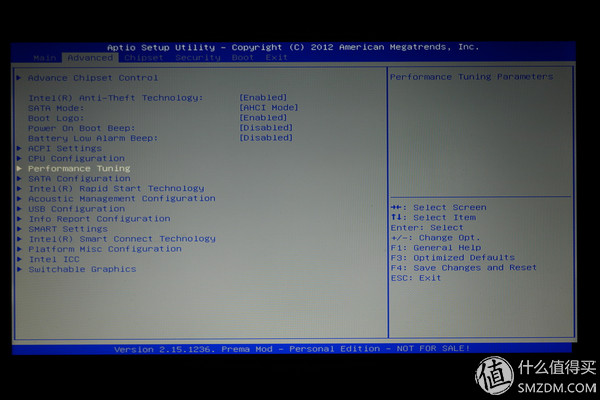
然åŽå°±å¯ä»¥çœ‹åˆ°åŒ…括CPU和内å˜è¶…频在内的多ç§è¶…频功能
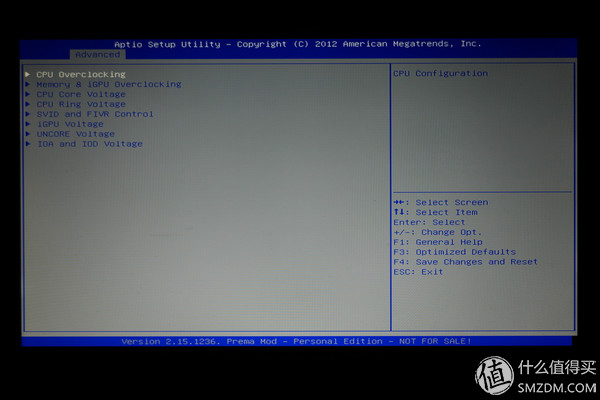
CPU超频èœå•é‡Œå¯ä»¥è®¾ç½®æ£å¸¸éžç¿é¢‘状æ€ä¸‹çš„å€é¢‘æ•°ï¼Œå› ä¸ºæˆ‘æ˜¯ä¸€é¢—4700MQ,所以默认就是2.4g,但是下é¢è¿˜èƒ½è®¾å®šåˆ†åˆ«ä½¿ç”¨1234ä¸ªæ ¸å¿ƒæ—¶çš„æœ€å¤§ç¿é¢‘å€æ•°ï¼Œè¿™å°±å¾ˆå¥½çŽ©äº†ï¼Œæˆ‘这里的数值比默认值调高了2(最多也åªèƒ½è°ƒé«˜è¿™ä¹ˆå¤šäº†ï¼‰ï¼Œç®—是4代移动处ç†å™¨çš„两å€é¢‘å°ç¦åˆ©ï¼Œä¹Ÿå°±æ˜¯4æ ¸æ»¡è½½é¢‘çŽ‡ä»Žé»˜è®¤çš„3.2gæ高到了现在的3.4g,å°è¶…0.2g
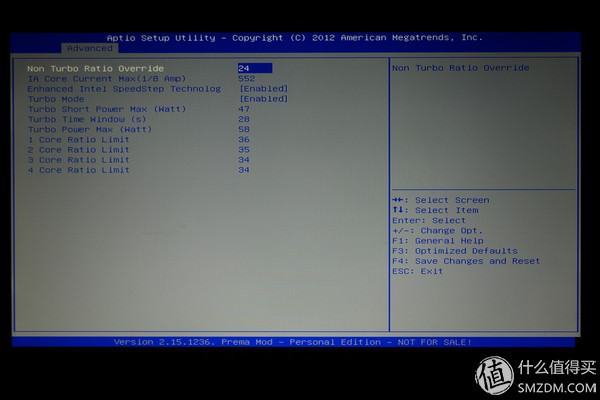
之åŽçš„内å˜å’Œæ ¸æ˜¾è¶…频èœå•ä¹Ÿæ˜¯éžå¸¸å¼ºå¤§ï¼Œä¸ä»…å¯ä»¥è®¾å®šå†…å˜çš„频率,居然还能设定一些时åºå°å‚,这里å¯ä»¥çœ‹åˆ°æˆ‘的内å˜ä¸Šä¸åŽ»1866,åªèƒ½ä»Ž1600å°è¶…到1800而已,而且很é—æ†¾çš„å› ä¸ºæ²¡æœ‰æä¾›ç”µåŽ‹è°ƒèŠ‚é€‰é¡¹ï¼Œä¹Ÿæ— æ³•åŠ åŽ‹æ¥å°è¯•æ›´é«˜é¢‘çŽ‡äº†ã€‚æ ¸æ˜¾çš„è¶…é¢‘é€‰é¡¹å¾ˆç®€å•ï¼Œå°±æ˜¯è®¾å®šå€æ•°è€Œå·²ï¼Œå®žé™…频率ç‰äºŽå€æ•°x50
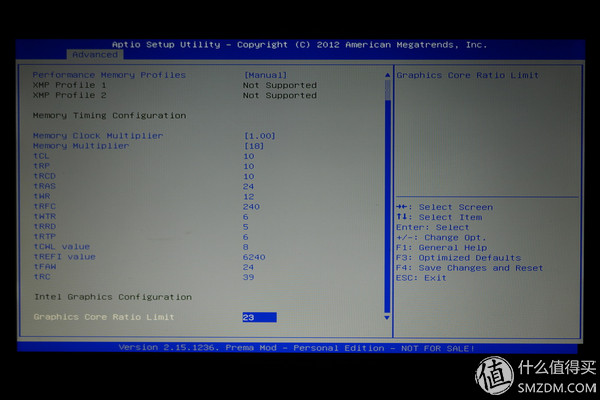
åŽé¢åˆ™æ˜¯ä¸€äº›ç”µåŽ‹çš„设定,我为了节能都在原基础上å‡äº†25-30mv
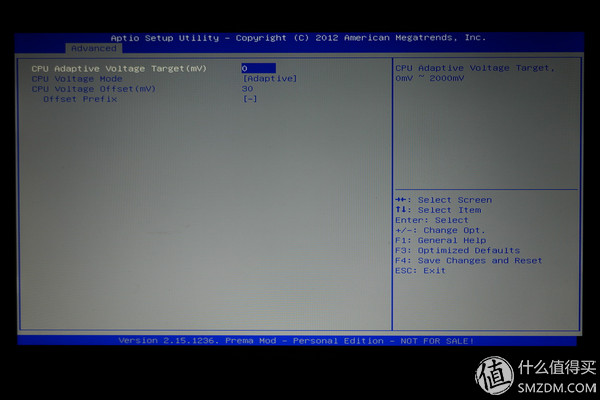

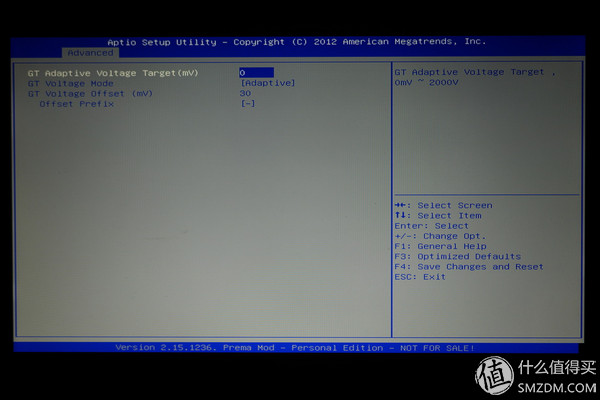

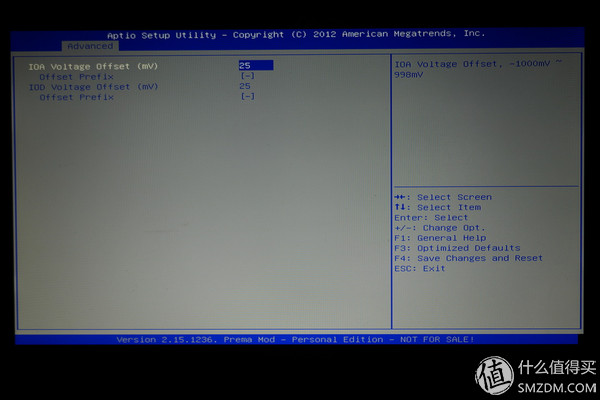
值得一æ的是这里还å¯ä»¥è®¾å®šRING频率和电压,ä¸è¿‡åŒæ ·åªæœ‰ä¸¤å€é¢‘çš„ç¦åˆ©è€Œå·²ï¼Œä»Ž34到36,多了没有
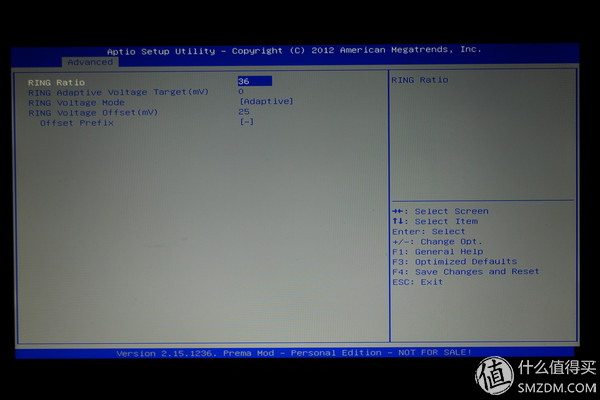
应该说笔记本通过修改版bios的刷入也å¯ä»¥èŽ·å¾—CPUåŠå†…å˜çš„超频能力,而且还åšçš„有æ¿æœ‰çœ¼ï¼Œè¯¥æœ‰çš„功能都有,é…åˆä¸é”频的K/X系移动CPU相信也能获得很高的å¯çŽ©æ€§ï¼Œä¸è¿‡ä¸€å®šè¦æ³¨æ„æ•£çƒå°±æ˜¯äº†ï¼Œæ¯•ç«Ÿç¬”记本ä¸å¯èƒ½åƒå°å¼æœºé‚£æ ·ç®€å•çš„æ›´æ¢æ€§èƒ½æ›´å¼ºçš„æ•£çƒå™¨
超频作为一项既å±é™©åˆè®©äººå…´å¥‹çš„活动,在如今这个大喊性能过剩的时代似乎已ç»å¤±åŽ»äº†åŽŸæœ¬çš„价值。然而对于çƒçˆ±æŠ˜è…¾çš„人æ¥è¯´ï¼Œè¿½æ±‚更高的频率除了带æ¥å®žå®žåœ¨åœ¨çš„性能æå‡ä¹‹å¤–,还能有一ç§è¿½æ±‚“更高更快更强â€è¿‡ç¨‹ä¸çš„ç²¾ç¥žæ»¡è¶³æ„Ÿï¼Œè¿™å¤§æ¦‚ä¹Ÿæ˜¯è®©æˆ‘ä¸€ç›´æ²‰è¿·çš„åŽŸå› å§
其实我也ä¸æ˜¯ä»€ä¹ˆå¤§ç¥žï¼ŒçŽ©è¶…频也åªæ˜¯ä¸ªäººçˆ±å¥½è€Œå·²ï¼Œè¿™ç¯‡å¸–å肯定也有很多ä¸è¶³çš„地方,比如超频之åŽCPU电压到底设置æˆoffset模å¼å¥½è¿˜æ˜¯fixed模å¼å¥½è¿™ä¸ªé—®é¢˜æˆ‘就基本没有讨论。写出æ¥çš„目的就是希望能炸出真æ£çš„大神带æ¥æ›´å¥½æ›´æ·±å…¥æ›´ä¸“ä¸šçš„æ–‡ç« å¦å¤–我真的好想è¦ä¸€æžšpceva论å›çš„邀请ç å•Š
é‚£ä¹ˆè¿™æ¬¡å°±æ˜¯è¿™æ ·ï¼Œæˆ‘ä»¬ä¸‹æ¬¡æžæœºå†è§ï¼Œæ³„æ³»
The operation of Automatic Guided Vehicles (AGVs) requires high utilization of these vehicles in order to achieve an optimum of profitability. Often, recharge of the batteries which are required for the drive of the AGVs, presents a problem.
The development of powerful batteries, which allow for quick recharge within seconds, enables the integration of charging contacts into the production cycle without removing the AGVs from the production process.
Battery charging stations may be installed anywhere within the system where the production process allows the AGV to stop (staging areas, turn arounds, loading stops etc.).
Agv Battery Charging System,60A Battery Charging System,100A Battery Charging System,Battery Charging System For Agv
Xinxiang Taihang Jiaxin Electric Tech Co., Ltd , https://www.chargers.be